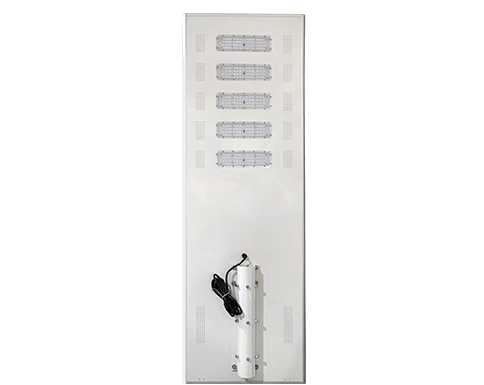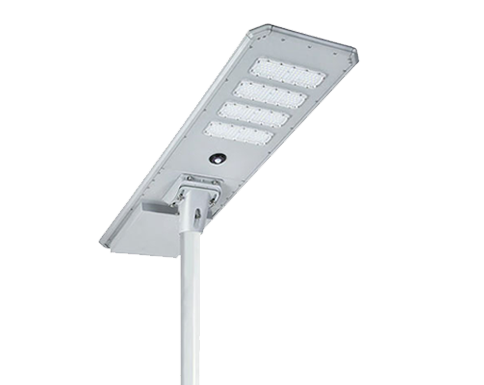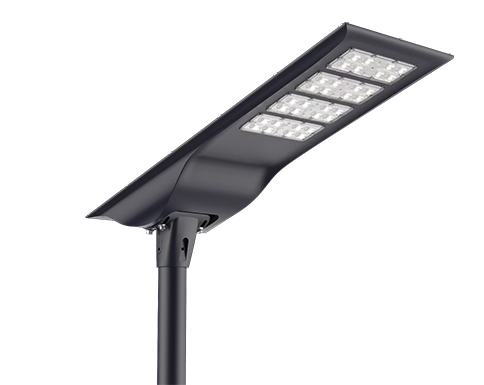Post time: 2021-10-20 09:51:33
Solar street lights are becoming more popular as a green alternative is becoming the go-to option for sustainability. Solar street lights provide a better value for cost, optimum lighting, and a renewable source of energy, lower maintenance, and easier installation. With all these factors added up, solar street lights can be the best replacement for most applications. One of the most significant game-changing factors happening now is the reduction in the cost of solar panels, and the efficiency ratings of batteries are constantly improving.
Street lights powered by solar are grid-free and can run reliably under almost any condition, even in the snow-covered winters or after a hurricane. The lights can run from dusk to dawn if required, or any other needed operating configuration such as split time or adaptive lighting technology. They can even reduce light pollution by using cutoff fixtures and aimed optics through new LED technology.
Off-grid solar street lights are comprised of a solar panel assembly mounted to the top of the pole and mounted to face south with no shading. The solar power system is wired to a battery assembly located directly under or behind the solar panel assembly or can be remotely mounted lower on the pole for easier maintenance in locking boxes.
The solar panels charge the batteries during the day to provide the needed energy for the operation of the solar light at night. This is designed by your solar lighting specialist and considers many factors, including installation location, winter weather conditions, local AASHTO wind load requirements, and system operation profile. All these factors must be calculated together to ensure the system operates reliably for the end-user.
The solar light fixture is located on a bracket below the solar power assembly. The fixture can operate many different types of lamps depending on the needs of the area. Compact fluorescent lamps (CFL) and light-emitting diodes (LED) are the most common lamp configurations used with solar-powered street lights. High-pressure sodium (HPS), low-pressure sodium (LPS), and induction are also available for specific projects with this type of requirement. LEDs can now mimic HPS and LPS lamps while providing savings through lower power consumption.
There is no standard streetlight fixture, although a Cobrahead style fixture is the most typically used. With new LED technology available, street light fixtures are changing to be more architecturally pleasing while keeping with the high-intensity light used with the Cobrahead style. These architectural fixtures fit in perfectly with urban and downtown areas.
Decorative fixtures can also be used, such as the SolarUrban. Using similar LED boards as other fixtures like the Viper, the Solar Urban can meet architectural requirements for downtown areas while still providing the light levels typically found with other overhead fixtures.
As stated before, the solar panel charges the battery during daylight hours. When the sun sets, the solar panel acts as a photocell, communicating with the onboard electronic controls, and turns the light fixture on. The control electronics keep the light on from dusk to dawn, from dusk for a set number of hours, or many other operating profiles available with commercial solar street light systems. Simple.
The next day at dawn, the solar charge controls reverse this process and charges the battery. The batteries will charge at different levels from morning until night, depending on the sun's strength and current weather conditions. This is why it is crucial to ensure there is no shading on the panel, as this can cause the panels not to charge as intended, causing the batteries not to receive the charge required to operate the next night again.
So there you have it. A solar street lighting system provides an all-in-one solution to any lighting application. There is no need to trench in grid power since all the power needed is located on the pole. Even if there is a brown or blackout, these solar-powered lights will continue since they operate entirely independently of grid power.
LED solar street light provides better visibility than LPS, HPS, or MHL The difference between all in one solar street light and split type



Please fill out the form below to start chatting with the next available agent.
Start Chat